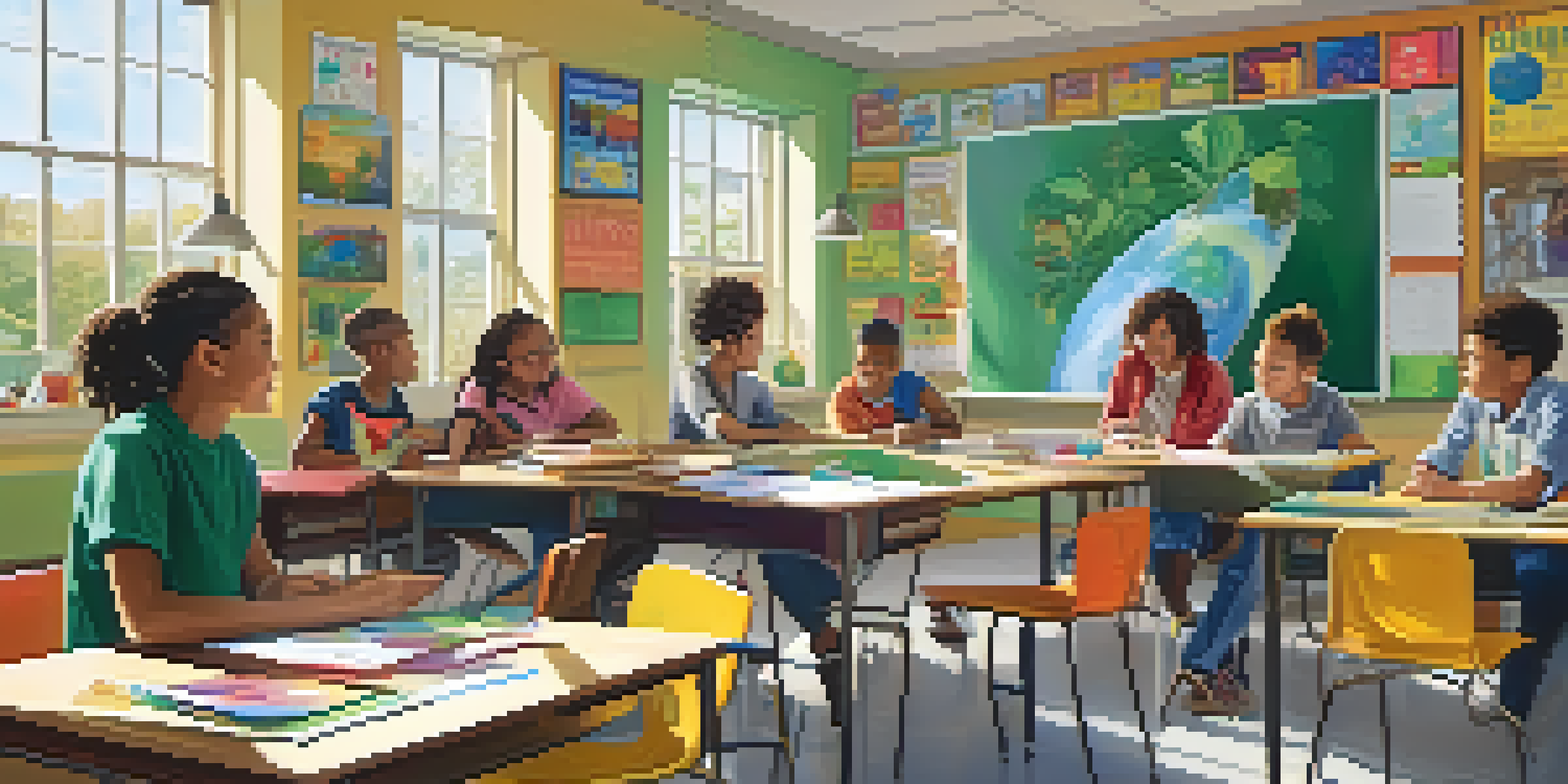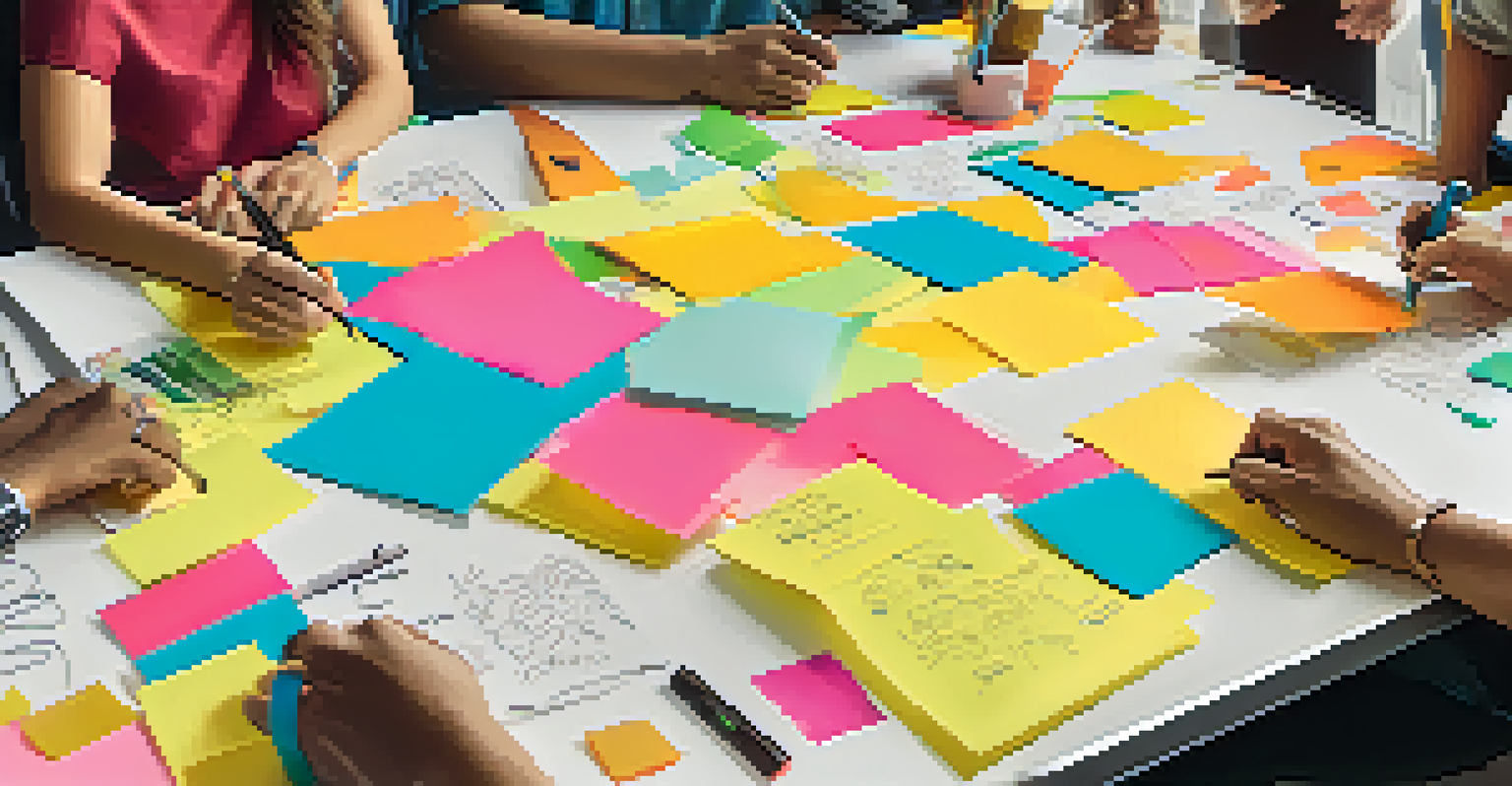The Importance of Collaboration in Learning Spaces

Understanding Collaboration in Learning Spaces
Collaboration in learning spaces refers to the collective effort of students working together to achieve common goals. This approach not only enhances learning outcomes but also builds essential interpersonal skills. Imagine a classroom where students share ideas, challenge each other’s perspectives, and create projects as a team; that’s the essence of collaboration.
Alone we can do so little; together we can do so much.
When students collaborate, they engage in discussions that deepen their understanding of the subject matter. This interaction often leads to richer insights than what one might gain through individual study. It's similar to how a brainstorming session at work can lead to creative solutions that one person alone might miss.
Ultimately, collaboration transforms passive learning into an active experience. Students become co-creators of knowledge rather than mere recipients, which can significantly boost their motivation and engagement in the learning process.
Benefits of Collaborative Learning
The benefits of collaborative learning extend beyond just improved academic performance. Research has shown that students engaged in teamwork develop critical skills such as communication, problem-solving, and leadership. Picture a group project where one student takes the lead, another handles research, and others contribute ideas; each member is learning valuable skills.

Additionally, collaboration fosters a sense of community among learners. This social connection can reduce feelings of isolation and anxiety, particularly in larger educational settings. Just like a sports team working together towards a common goal, students find support and camaraderie in their collaborative efforts.
Collaboration Enhances Learning
Working together allows students to deepen their understanding and become co-creators of knowledge.
Moreover, collaborating with diverse peers exposes students to different viewpoints and backgrounds. This experience not only enriches their understanding of the subject but also prepares them for a globalized world where teamwork is often cross-cultural.
Creating Collaborative Learning Environments
To promote collaboration, educators must create learning environments that encourage interaction and teamwork. This can be achieved by designing classroom layouts that facilitate group work, such as round tables or breakout areas. Think of a coffee shop setting where people gather to share ideas; the atmosphere is key to productive collaboration.
Coming together is a beginning; keeping together is progress; working together is success.
Incorporating technology can also enhance collaborative learning. Tools like shared documents, discussion boards, and project management apps allow students to work together seamlessly, even outside the classroom. It’s like having a virtual workspace where ideas can flow freely, regardless of location.
Lastly, setting clear expectations and roles within groups can help structure collaborative efforts. When students understand their responsibilities and how they contribute to the group’s success, they feel more invested in the process. This structure can make the difference between a chaotic group project and a well-executed team effort.
Challenges of Collaboration in Learning Spaces
While collaboration offers many benefits, it also comes with its own set of challenges. One common issue is the imbalance of participation, where some students dominate group discussions while others remain passive. This can lead to frustration and disengagement for those who feel overshadowed.
Additionally, varying levels of commitment among group members can create tension. When one person isn’t pulling their weight, it can lead to resentment and conflict. Just like in a band, if one musician isn’t practicing, it affects the entire performance.
Skills Developed Through Teamwork
Collaborative learning fosters essential skills like communication, problem-solving, and leadership among students.
To address these challenges, educators can implement strategies such as peer evaluations or rotating group roles. By fostering accountability and ensuring everyone’s voice is heard, collaborative learning can become a more balanced and rewarding experience for all students.
The Role of Educators in Fostering Collaboration
Educators play a crucial role in fostering a culture of collaboration within learning spaces. By modeling collaborative behaviors themselves, teachers can demonstrate the value of working together. Imagine a teacher facilitating a discussion where they encourage students to share ideas; this sets a powerful example.
Furthermore, educators can design assignments that specifically require collaboration. Group projects, peer reviews, and collaborative presentations not only encourage teamwork but also allow students to learn from one another. It’s like planting seeds of cooperation that can grow into strong collaborative skills.
Lastly, providing feedback and support during collaborative activities is essential. When educators actively engage with groups, offering guidance and encouragement, students feel more confident in their collaborative efforts. This support can make all the difference in how well students work together.
Real-World Applications of Collaborative Learning
Collaborative learning isn’t just limited to the classroom; it has real-world applications that prepare students for future challenges. In the workplace, teamwork is often essential to success, and skills learned through collaborative learning can translate directly to professional environments. Think of how companies rely on team projects to innovate and solve problems.
Moreover, collaborative skills are critical in community settings, where individuals often come together to address local issues. Students who learn to collaborate effectively are more likely to engage in their communities and contribute positively. It’s akin to how neighborhood groups mobilize to improve their surroundings through shared efforts.
Educators Shape Collaborative Culture
Teachers play a key role in modeling collaboration and designing assignments that encourage teamwork.
In essence, fostering collaboration in educational settings equips students not only for academic success but also for the complexities of adult life. The ability to work well with others is a skill that will serve them in countless situations, from group projects to civic engagement.
Conclusion: Embracing Collaboration in Learning Spaces
In conclusion, collaboration is a vital component of effective learning spaces that enhances not only academic success but also personal growth. By creating collaborative environments, educators empower students to learn from one another, develop essential skills, and build a sense of community. It’s like creating a tapestry where each thread contributes to a vibrant whole.
Embracing collaboration means acknowledging the diverse strengths and perspectives that each student brings to the table. This diversity enriches the learning experience and prepares students for the realities of working in diverse teams in the future. Just as a choir harmonizes different voices to create beautiful music, collaboration brings together unique ideas to foster innovation.

Ultimately, by prioritizing collaboration in education, we are shaping a generation of learners who are not only knowledgeable but also capable of working together to tackle challenges. Let’s continue to champion collaboration and nurture environments where students can thrive together.